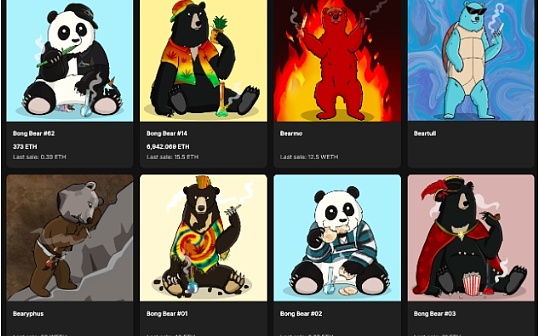
A major earthquake occurred in the airdrop track recently.The originally highly anticipated ZKsync, LayerZero and Blast were officially TGE in June. They thought it was a feast for the party dropping, but it turned out to be the birth of “the biggest counterattack in history” and “the largest witch database”.In addition, Binance MegaDrop has also imposed penalties on users who receive rewards from multiple KYCs.The wool parties were not only beaten back, but also labeled as witches, complaining in the double loss.The airdrop track, which was once regarded as a channel for getting rich by countless people, has now been completely broken into the cold palace.
It can be said that the number of airdrop tokens is not satisfactory, but the overall market trend continues to be sluggish. Most of the airdrop tokens are at their peak when they go online, and then they plummeted all the way, and countless wool parties eventually fail to make ends meet.but,Is this chaos a phased phenomenon or an inevitable result after the industry develops to a certain level?
Focusing on the above issues, this article combines the recently controversial ZKsync airdrop, LayerZero anti-witch measures and Blast points system and other realistic materials to deeply analyze the current airdrop track and its future trends.We think thatThe era of getting rich by purging hair has become history. Everyone should give up their fantasies and find something more suitable and valuable to find another way out.
ZKsync airdrop: Matthew effect, rat trading, ignoring old users
The most famous TGE and airdrop incidents in recent times include the ZKsync airdrop in June. Although its Airdrop share accounts for about 17% of the Token supply, and the airdrop weight ratio is considered to be high among well-known projects, its allocation details and airdrops areThe effect still arouses dissatisfaction in the community, and the reasons can be briefly attributed to three points.
First, there is a clear Matthew effect in this airdrop allocation.Although ZKsync claims to be “grand” in community rewards, as a celebrity project with more than 6 million active addresses, only nearly 700,000 addresses are eligible for airdrops, which means that only 10% of the addresses have received the reward.The proportion is basically at the bottom among TGE’s several major Ethereum Layer2 projects.
In addition, in contrast to the dismal gains of most airdrop players, 23.9% of the airdrops were allocated to 9,203 addresses, each of which received nearly 100,000 Token rewards, about 27,000 US dollars, ultimately resulting in different airdrop addressesThe difference between the minimum/maximum rewards obtained is 100 times.
These data show that ZKsync’s reward mechanism is greatly biased towards a few top players.

Afterwards, it was verified that ZKsync allocated most of the airdrops to those who had more assets on the chain, or OG and contributors in the community.ZKsync may hope to encourage this group of people to hold tokens for a long time.However, the result was not as expected. According to Nansen’s data as of June 30,Among the top 100,000 addresses that obtained ZK airdrops, only 19.3% continued to hold the token, and the remaining addresses were partially or completely reselling tokens.
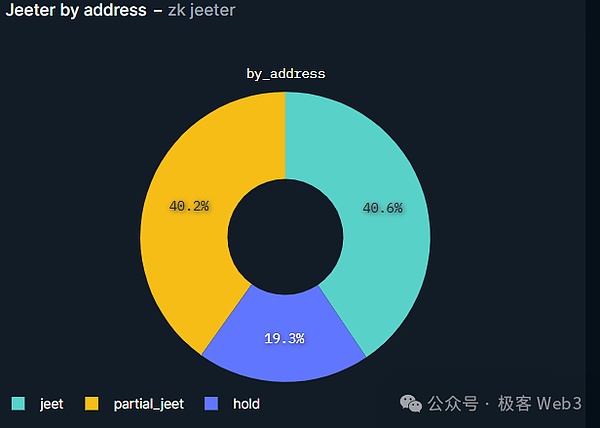
Second, in addition to the unreasonable distribution weight mentioned above, this airdrop distribution is also considered to be “rat-handling”.For example, although the holders of PudgyPenguins, MiladyMaker, Degen, and Bonsai do not directly participate in the ZKsync ecological interaction, they are still eligible to receive airdrops. They obtain more airdrops than many users who actively participate in the interaction.These suspected “rat warehouse” have greatly diluted the real airdrop share of users and aroused strong disgust in the community.
Interestingly, not only airdrop players objected to ZKsync, but many project parties in the ZKsync ecosystem have also joined the list of rights defenders.The NFT project party, which has long been on the whitelist, is not qualified to participate in the special airdrop activity of ZKsync to the project party in the ecosystem. Some MEME projects with less than 10,000 fans on Twitter, such as LongMao and Long, have obtainedA certain share of airdrops can’t help but make people doubt.
In addition, many long-term projects in the ZKsync ecosystem, such as Zerolend and Element, have also tweeted that they have been treated unfairly.On the contrary, Aave, Ethena and some projects that have not yet been launched in the ecosystem have received airdrops, and Aave has received the largest share this time.ZKsync uses 0.5% of the total FDV, or approximately $20 million, to support Aave’s social product Lens, more than the latter’s publicly raised $15 million.
Based on the above reasons, many community members and project parties expressed doubts and dissatisfaction with ZKsync’s allocation mechanism, believing that there is a lack of transparency and fairness.
Third, although the ZKsync main network has been online for 4 years and has been operating for a long time, early loyal users have not gained any advantage in this airdrop allocation.Among the 7 airdrop bonus rules for ZKsync, early users of Zksync lite only met two. If they do not participate in the ZKsync Era interaction in the future, they will not even be eligible to receive airdrops.
The above are some of the doubts raised by community members regarding ZKsync airdrops.ZKsync officially defended the results of this moisture-filled airdrop by evading large-scale robots and witch attacks.butIn actual anti-witch operations, ZKsync does not filter the witch account thoroughly.
A high-level witch player @k1z4 claimed to have obtained 6.6 million airdrop tokens with 350 wallet addresses.In addition, more than 3,300 accounts listed as witch addresses by Arbitrum were still rewarded, and more than 130 million airdrop tokens were invested in Layerzero’s witch list addresses.
Compared with Eigenlayer adjusting the distribution plan under the pressure of community public opinion,ZKsync did not take any solution, ignoring the dissatisfaction of community members, and ultimately ended up completely disappointing people.Currently, the activity of ZKsync mainnet has been declining since it reached its peak in March, and this trend has been extremely intensified after TGE.

LayerZero: Releases the largest list of witches in history
Unlike ZKsync’s practice of not making airdrop rules transparent in advance and giving a set of arguments temporarily afterwards,LayerZero has adopted an open and transparent approach in details such as airdrop rules and allocation plans, anti-witch methods, and fully listened to the community’s opinions.Ensure fair airdrop distribution.To this end, LayerZero co-founder Bryan Pellegrino actively interacts with the community on social media, showing a high emphasis on the community.
However, the biggest point of complaints for the project is not the airdrop allocation rules, but the witch problem.
LayerZero quickly launched a two-month witch review after announcing snapshots on May 1.The first round of reviews combined Nansen and Chaos to filter out obvious witch behaviors such as common scripts, synchronizers and address associations.After that, the Layerzero team launched the second round of anti-witch operations – community reporting.Users can report witch behaviors from other accounts to each other and receive a part of the airdrop that the reported account should receive as a reward.
Since the witch address will be published in the form of a list, it will affect the airdrop policy of other subsequent projects, this community reporting system has sparked widespread discussion and criticism.

certainly,The community reporting system is not first created by LayerZero. Previously, many projects such as Connext, Hop, and Safe have adopted this method to filter witch addresses before airdropping.However, unlike the previous community reporting system, LayerZero does not start the reporting program after the airdrop query function is turned on, but instead includes all the passers-by addresses in the scope of review, involving about 6 million addresses. This move is quickThis triggered condemnation from the community.
In the early stage of GitHub reporting, the LayerZero community “used magic to fight magic” and delayed the review process through DDOS and malicious batch reporting, which once caused the witch hunter’s GitHub account to be blocked.Later, the reporting portal was transferred to the platform that required a deposit, but a large amount of reporting information still delayed LayerZero’s work progress and ultimately failed to complete the review before the airdrop query was opened.
It can be said thatThe community reporting system fully exerts the imagination of the masses, causing a large number of witch hunting ideas to emerge, and the coverage rate of anti-witches is almost unprecedented.The characteristics of these discovered witch addresses are:
1. There are certain regularities in ENS domain name registration.In the LayerZero community round reporting, there is an example where a group of ENS addresses all start with ruslan and suffixed with 001-104. These addresses are reported as clusters controlled by a single entity.The address cluster has received a large number of airdrops on ZKsync, with a major suspicion of the witch.This case has attracted people’s attention and made people pay attention to the clues in the registration of ENS domain names.
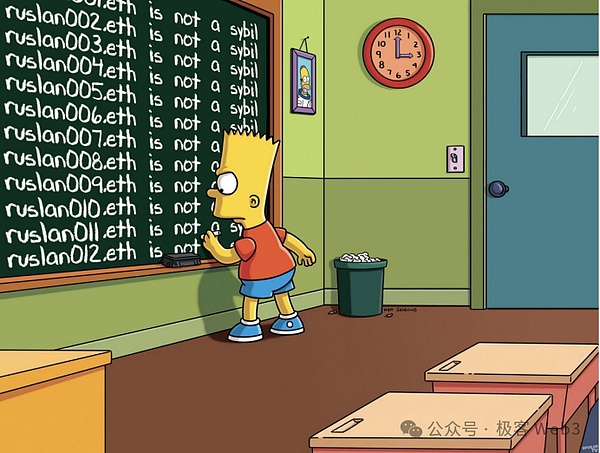
2. Clues in non-EVM chains and testnet addresses.Although witch players interact cautiously on the EVM chain and use various anti-witch methods, their interaction behaviors may be exposed within the non-EVM ecosystem.The Witch Hunter can find the Witch Cluster through the relevance of the EVM address on the Aptos, Solona, and Starknet wallets.In addition, witch hunters can also find witch addresses from the test website.
3. Clues in on-chain voting behavior.A witch hunter uses the correlation of voting behaviors for StargateDAO in Snapshot as the basis, and finally finds 7404 witch addresses based on the relationship between the various addresses in terms of behavioral laws, the time of the first vote and the interval of previous votes., belongs to 211 clusters.
In addition, social media accounts have also become the basis for witch hunting.Potential witch accounts can also be identified through the content of the posting, the correlation between each other, and even inferring the relevance based on the invitation link serial number.Although this method has not been fully adopted, its reference significance cannot be ignored.
If the witch’s identity is inferred through behavioral similarity, for a single entity with multiple active accounts, even if there is no direct correlation between the addresses, it is inevitable that it will be noticed due to behavioral similarity during long-term use.However, the above method is more of an inference, lacks direct evidence, and there is a risk of manslaughtering non-witch users.So after LayerZero announced the list of witches, she still opened the opportunity to declare to the community to reduce the manslaughter rate.
In summary, in the community reporting system, there is a game relationship between the witch hunter, the user and the airdrop studio.If the Maolu Studio surrenders, it can still receive 15% of the original reward; if the witch judgment criteria are not determined, the witch hunter can “pull out of the hole” through the official and community reporting channels, and can obtain 10% of the airdrop income of the reported account..To avoid wasting energy, the witch hunter must ensure that the reported address was originally qualified to get the airdrop.
Judging from the final result,LayerZero only allocated 8.5% of the tokens to a community with 1.2 million people during TGE. There were too many monks and less porridge, and the amount of airdrops people received was not ideal.Even the top 5% of users have a very average income.Whether it is a surrender or a witch hunter, the benefits are not high.This can be proven in data leaking on the media.
also,Layerzero officially confiscated the 10 million tokens deserved by the witch’s address. Although the team has not announced the final witch list, based on the previous rounds of the list, the final list involves no less than 1 million addresses, which is the largest in the history of Web3.Witch database.This move triggered an unprecedented battle royale. The Wool Party is more cautious when facing project interactions that have not yet been TGE, and even made many people give up the hair-pulling interactions of cross-chain bridges such as Hyperlane, Bungee and LiFi.
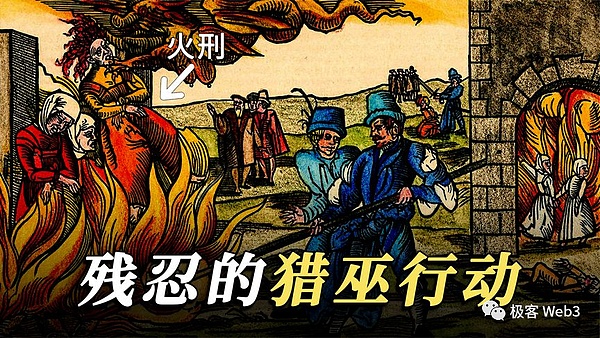
Redefining the witch
After Layerzero announced the encirclement of the witches, ZkLink, Linea, and Drift followed closely to join the action. The witch hunting atmosphere was spread to other ecology, and even pledge and verification nodes were included in the attack scope of the witch hunting operation.However, different projects do not have the same definition of “witch” and there is still a lot of ambiguity in the positioning of real users and witches.
Although Nomis and Trustalbas have launched indicators to measure user authenticity, many projects do not subdivide the differences between Farmer and Sybil, but directly define some Farm behaviors with non-real users as witches.For example, Wormhole treats volume trading as spam transactions and classifies them as witch behaviors, confiscating user-related rewards;
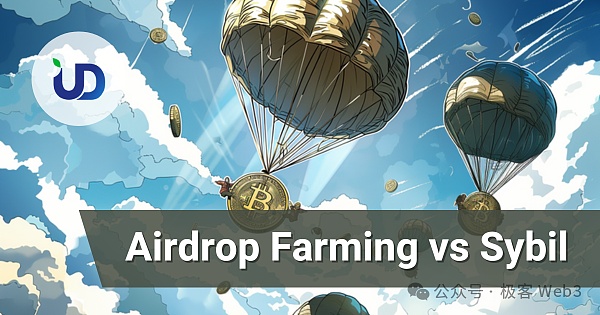
Similarly, Layerzero defines Farmer’s commonly used apps as witch applications, and defines users who frequently use “witch farming” programs such as Merkly, L2Pass, L2Marathon, as well as valueless NFTs and small cross-chain as witches.However, Layerzero ultimately only downgraded the use of cross-chain and cross-chain with low-quality NFTs and did not blacklist it. This practice is indeed more reasonable.
Blast: Points airdrops are heading for collapse
As an alternative to interactive airdrops,The points system has been controversial since its inception.On the one hand, the uncertainty of airdrops, the opacity of points, and the project party can modify the points rules at will.For example, in Eigenlayer and Drift Protocol, points exchanged for users’ real money and silver pledges are claimed to be not the main basis for airdrops, and Etherfi has even seen points shrinking and stealing points;
On the other hand, even if you have clear cards, the future dilution situation is still unknown.Taking the multi-round Odyssey activities initiated by Linea as an example, points may be diluted in the future due to various factors such as various activities and prolonging TGE time.These practices of the project party are vividly called “PUA” by users.
Speaking of points system airdrops, Blast is its originator.There are two points system, and users can obtain ordinary points through deposits and gold points through on-chain interaction.However, Blast has always had the concept of ordinary points before, and gold points were suddenly introduced after the main network was launched.The difference between the two is that ordinary points are obtained through the positive correlation of pledged assets and duration, while golden points require users to continue to participate in interaction after the main network is online.Golden points can increase the user’s ordinary points exponentially, reaching up to 120 times the ordinary points.
At first, people thought that the pledge activity ended when the Blast main network was online, and the airdrop was allocated according to the ordinary points at this time. However, after the pledge activity ended, Blast suddenly launched a golden point mechanism, which caught people off guard.
First of all, Blast is the first batch of projects to use the points system to airdrop. The core of this system is that users with more pledged assets and long-term time will get more airdrops, but the 120-fold multiplier of gold points makes it at the cost of a large number of locking positions.Early user income is diluted without limit.
Secondly, the gold points mechanism requires users to continue to leave all pledged assets on the Blast network for interaction, because after the main network is online, the project party does not take a snapshot, but continues to obtain ordinary points based on the amount of assets as before.In this case, if the user takes out most of the assets and leaves only a small amount of assets for interaction, the growth rate of ordinary points as the base will be greatly reduced, and the role of gold points will be greatly reduced.Quaternally speaking, this is a typical “reversal”.
Anyway,The Blast mechanism has been calculated, which has greatly reduced the benefits obtained by airdrop players and tried to keep user assets stuck on the Blast chain, but people are not buying it.After the rules were announced, Blast’s TVL fell by $1 billion in just 10 days, a third of the decline.
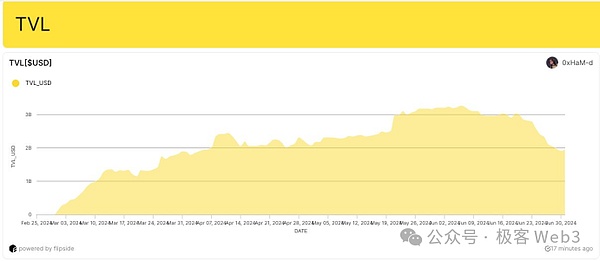
After endless people’s heads, interactions, and deposits, the points system eventually evolved into a competition of social influence, a game of big players.KOL uses its social influence to invite users, and then gain airdrop weight to enjoy the benefits. The big players have an innate advantage in the points game that focuses on deposits. Justin Sun gained a share of up to 4.26% in the first season of EigenLayer airdrop.
When the airdrop of the points project no longer recognizes points and the points are diluted in various ways, the points earned by users may even be disqualified by the witch review, this distribution method will gradually be despised by the community.Blast’s large-scale counterattack has made more and more people unwilling to sacrifice their opportunity costs in exchange for invisible and intangible points.The rise of the points system begins with Tieshun, or it may end with Tieshun.
The sky is falling in the airdrop track
The model of getting rich by airdrops has been popular for 4 years since the summer of Defi, but now it has become increasingly popular.Since the beginning of the year, with the increase in the number of fans of Lumao KOL and the rapid expansion of the scale of Lumao studios, people’s attention to airdrops has shown obvious signs of overheating.In contrast,The airdrop yield of individual users has shown an exponential decline.From Wormhole, Starknet to Taiko, LayerZero, ZKsync and other projects, in just half a year, the airdrop rewards available to a single address have been reduced at a speed visible to the naked eye.
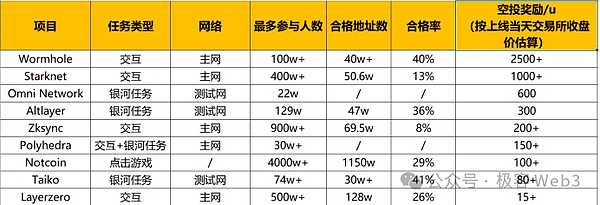
Due to market and community sentiment, many projects have not performed well at TGE.The downturn in the community can be attributed to the low return on investment ratio of users, while negative sentiment in the secondary market reflects investors’ dissatisfaction with low circulation and high FDV projects.
Afterwards, the community members responded fiercely to projects that needed long-term interactions with ZKsync, LayerZero, Taiko, etc., and were eventually beaten up, and they all expressed their voices of confrontation.In contrast, the practice of distributing airdrops to non-ecological users has not caused much controversy, because its airdrops do not require users to conduct too much interactive “cultivation” within the ecosystem.Not paying too much is a surprise for the winner.
In summary, the original intention of airdrop is to use expected rewards to attract real users, and the track of hair-lushing is not what project parties want to see. The various strange phenomena that have appeared recently can be attributed to the between airdrop farmers and project parties.Long-term motivation is incompatible.
In order to get rewards, airdrop farmers spent a lot of time and money, and had a lot of meaningless interactions, thinking that they should have received a lot of rewards; while the project party was more willing to allocate the rewards to real users who helped the project gain reputational contribution.These two are contrary, but a few years ago, anti-witch resources were scarce and the airdrop threshold was lowered, which made most people profitable. Many airdrop farmers abandoned the project just to get rewards and issued the airdrop.And then the airdrop failed to achieve the expected results of the project party.
A typical example of this phenomenon is LayerZero, where the user usage rate dropped sharply after airdrop (as shown in the figure below).It can be said that当今空投赛道所谓的怪象与变化,似乎也正是在回归本源,即不再让那些没有真正为生态系统做出贡献的用户获得收益。
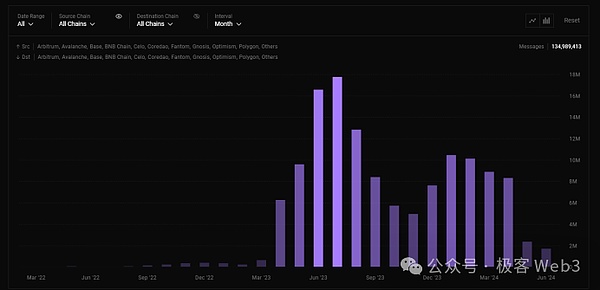
(Photo source: @Axel_bitblaze69)
Jupiter联创此前表示,空投是对早期用户的一种礼物,而非奖励、忠诚度计划或增长手段。然而,在Arbitrum空投后,大量工作室的涌入打破了早期用户与项目方之间的平衡。andBryan Pellegrino则强调,用户捐赠并非强制,获取空投也不是理所应当的事。
如今大规模的“反撸”已使得撸毛淘金热大幅降温,虚假繁荣的假象逐渐破灭。For the project party, ecological construction has also begun to return to rationality. They need to think about how to attract normal users and avoid the erosion of automated witches as much as possible. Whether it is light filtering or excessive hunting, it will arouse dissatisfaction and condemnation in the community.对于羊毛党来说,空投的高赔率和大撒钱时代已经过去,参与空投活动时应降低预期,不再做这种靠链上交互发横财的美梦,才是真的明智之举。
无论如何,空投不是患寡就是患不均,如今整个Web3的市场容量已接近饱和,在羊毛党泛滥成灾的今天,空投致富已然成为泡影。


